| the Chesapeake Bay
Wayfarer Cruise 2007 Crisfield - Smith Is. - Tangier Is. - Watts Is. - Crisfield Thursday 31 May - 2 photos mostly by Alan Asselstine and Uncle Al ... |
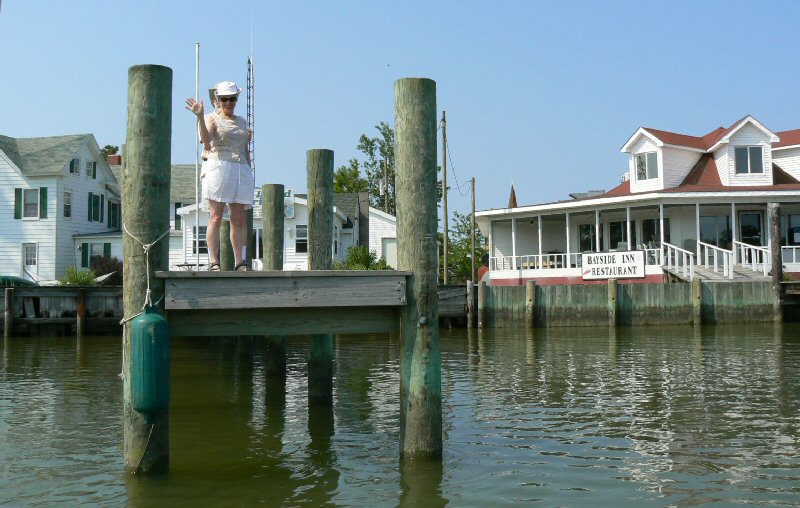 |
| One of the two friendly
couples
who had shared the B&B with us came down to the dock
to see us off. ... |
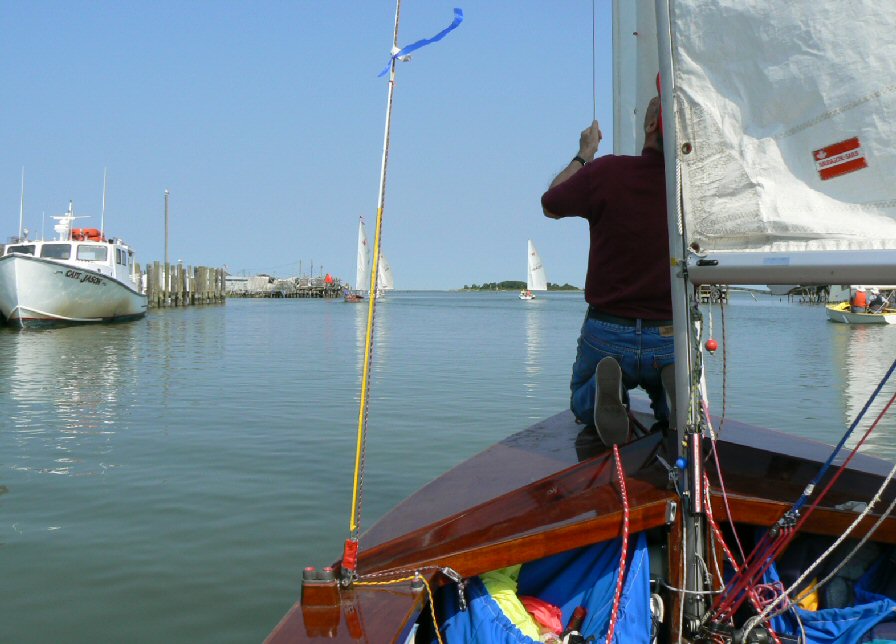 |
| Hans unrolled the jib and
we
were off towards the ... ... |
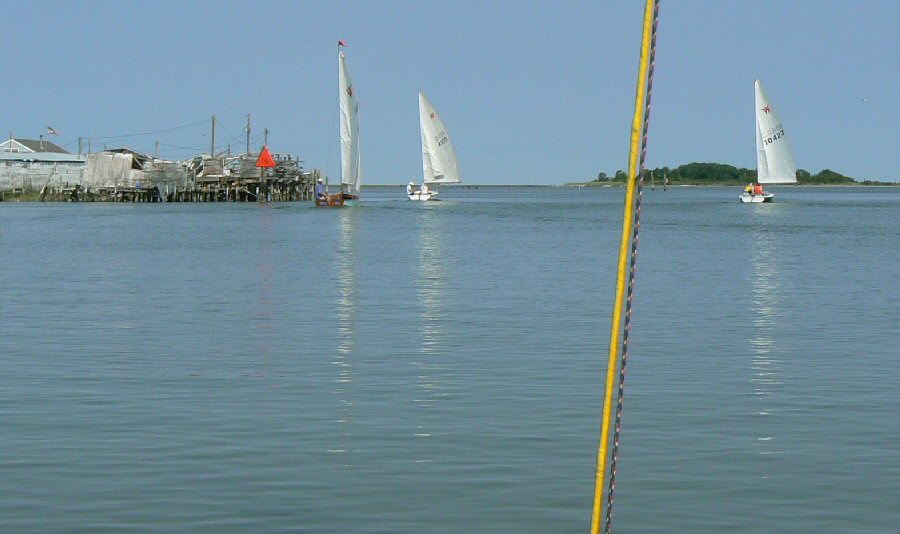 |
| ... western exit from the
Big
Thorofare. Here ... ... |
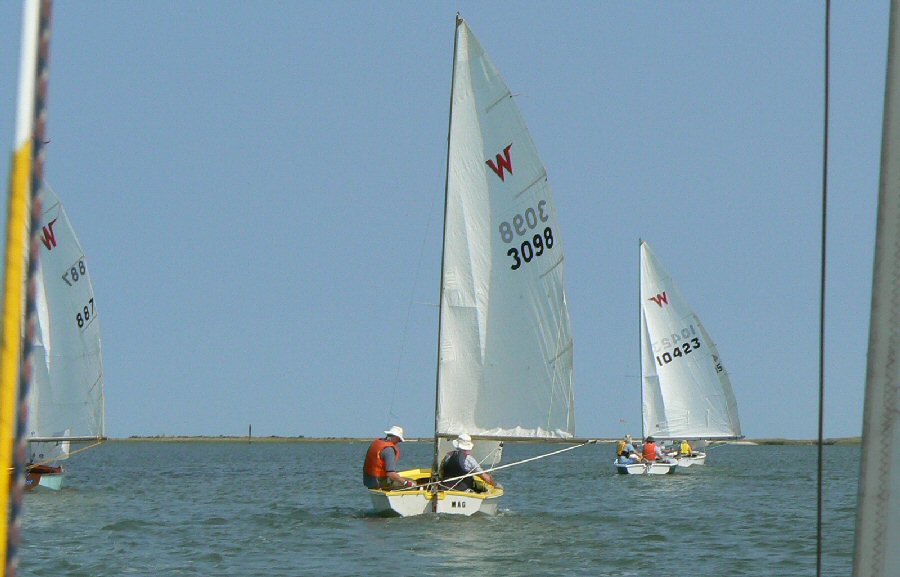 |
| ... we stuck pretty much to
the
... ... |
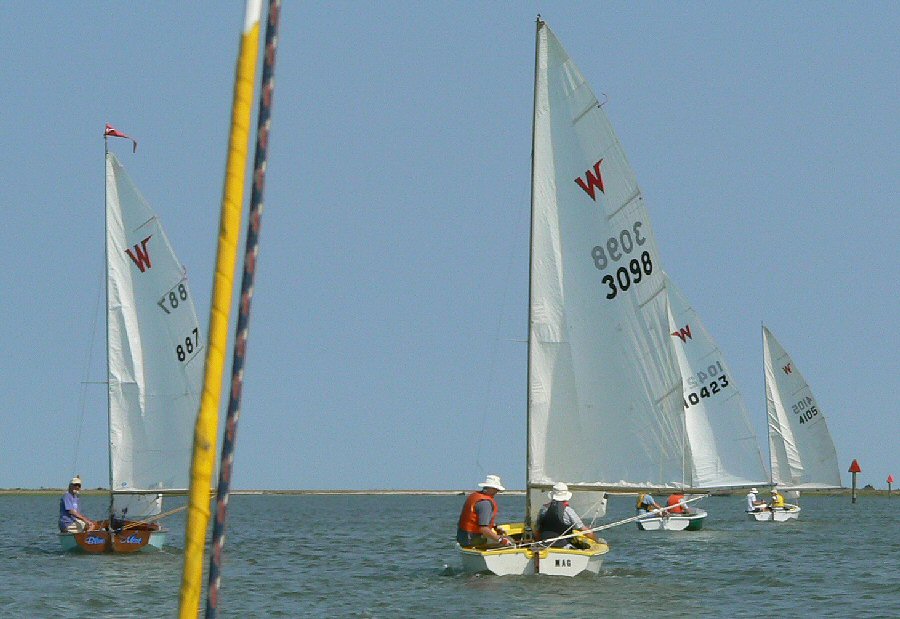 |
| ... marked channel since
there
is the occasional (man-made?) rock pile elsewhere. ... |
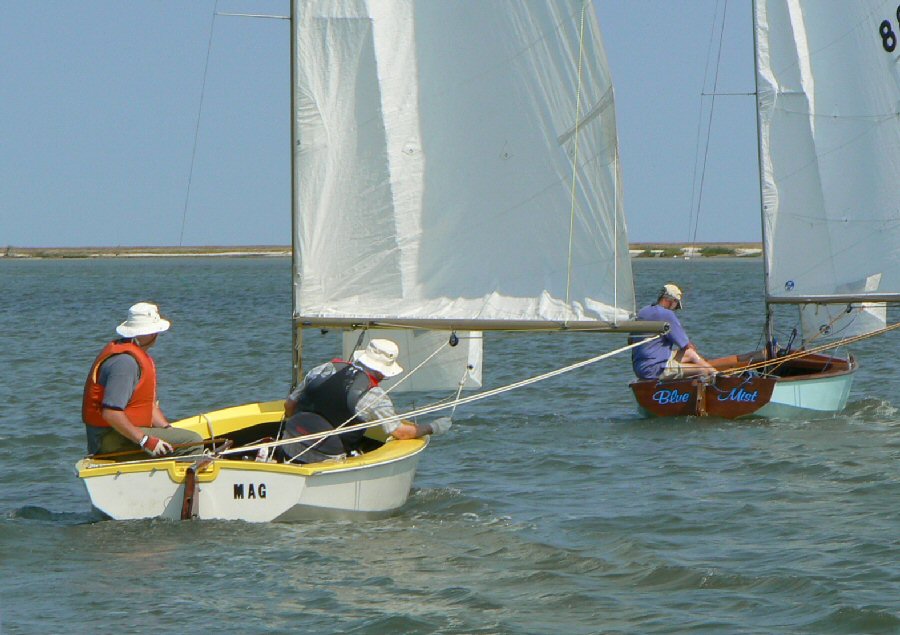 |
| Sailing in "line of battle"
formation like this, with us bringing up the rear, we got
to take some
lovely action shots. Above, the Girards are following Dick while ... ... |
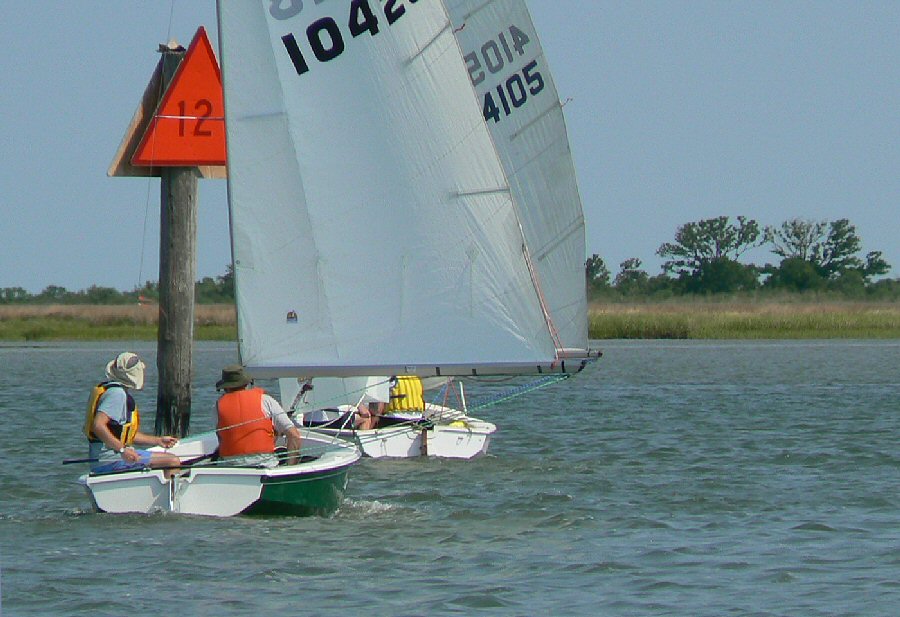 |
| ... Richard (10423) and
Tony
(4105) get set to ... ... |
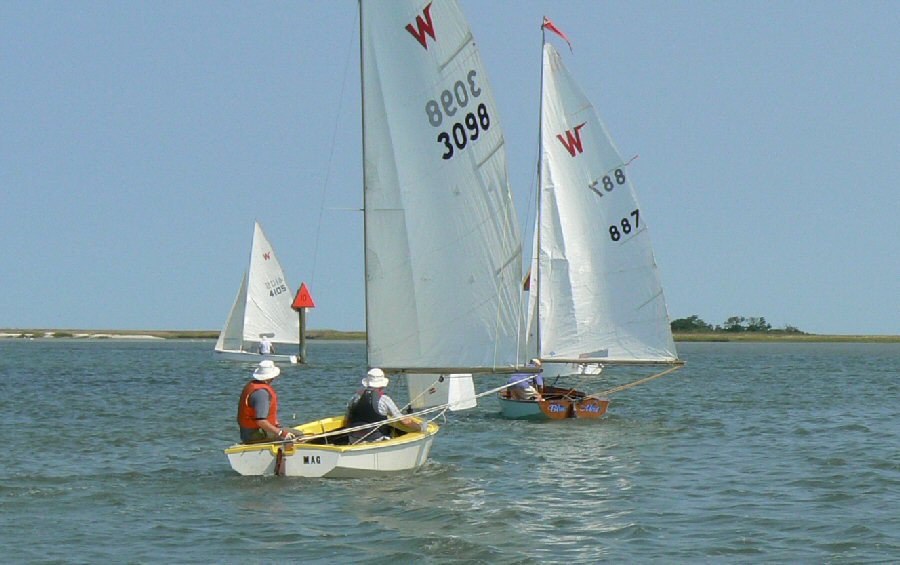 |
| ... follow a right-angle
bend in
the channel. ... |
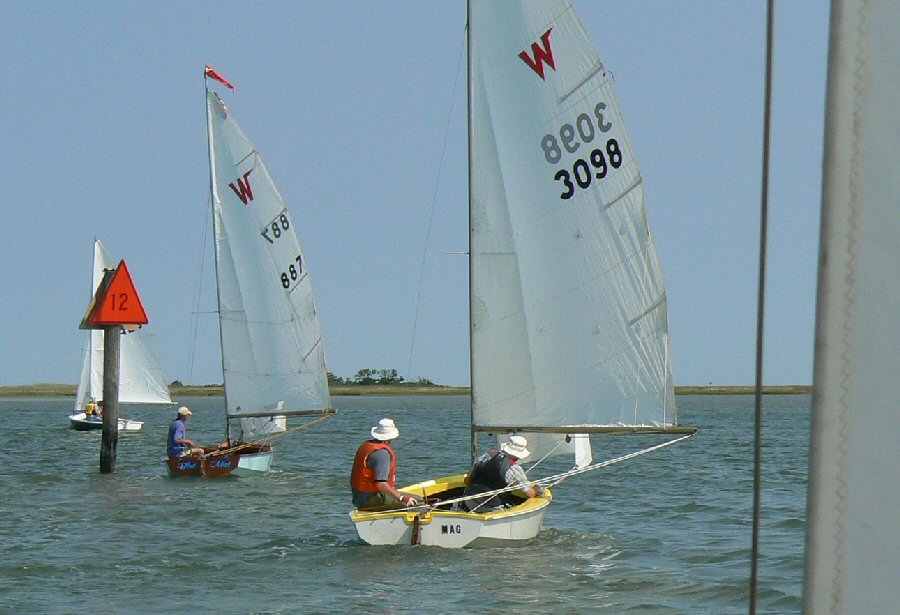 |
| Looking good, Richard (l) rounds Channel
marker #12, and
... ... |
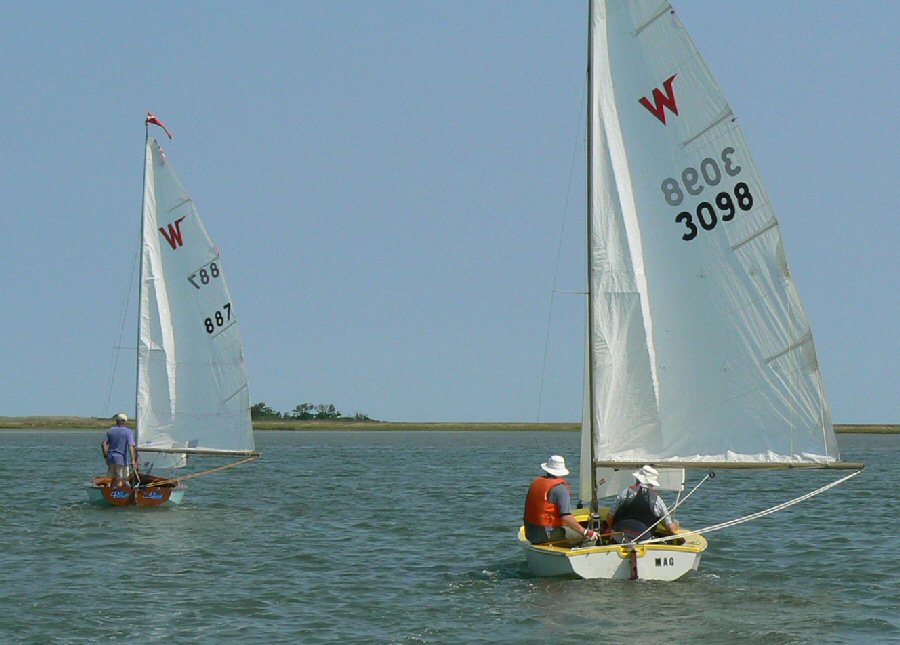 |
| ... Dick (887) and André
prepare to follow. ... |
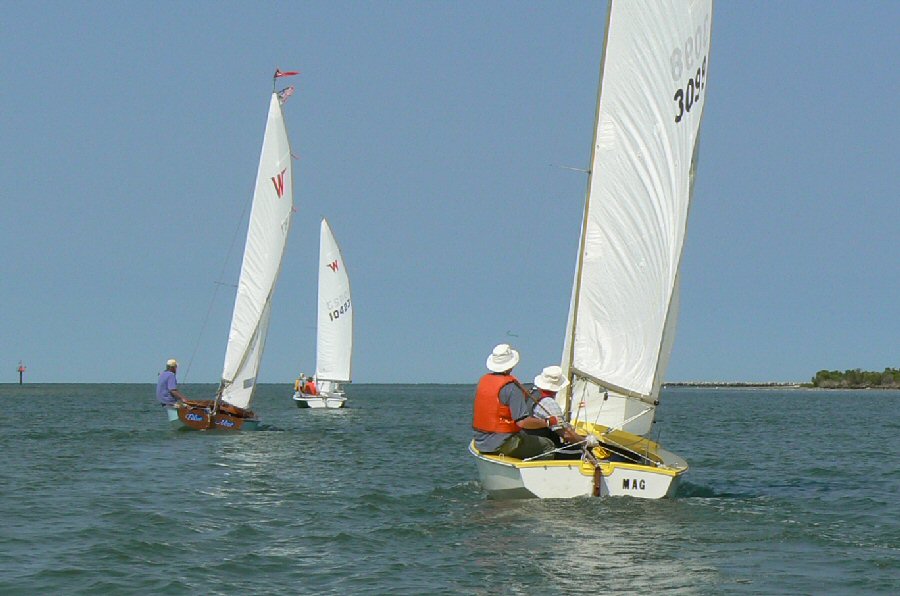 |
| On the ensuing close reach
towards the channel mouth, Al got to study ... ... |
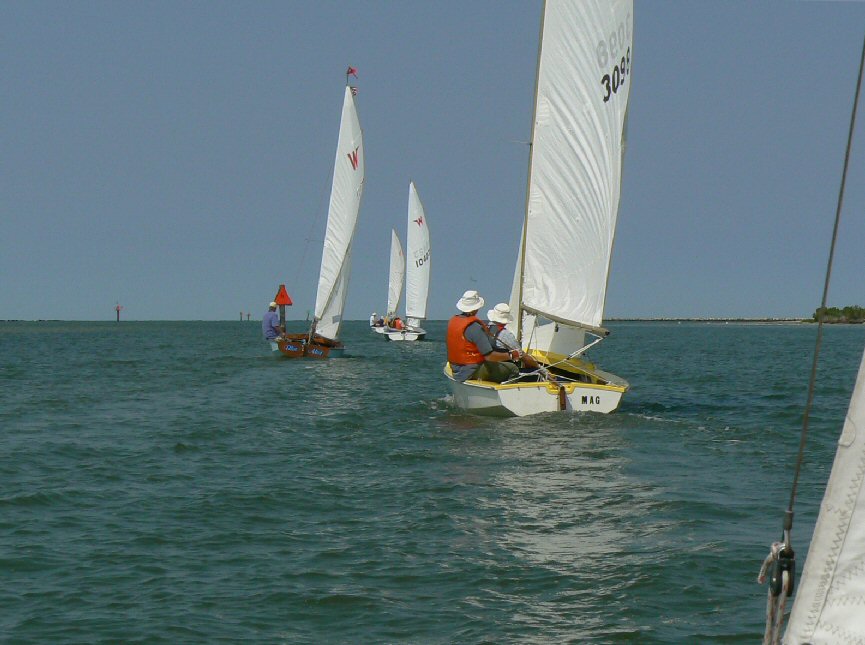 |
|
... an interesting
variety of
mainsail leech shapes: even at this distance, we can see
here that our
leading boat Tony has the top of his main twisting off
too far, and the
fact that the aft end of his boom is angled upwards is
the other clue
that leads to the inescapable conclusion that Tony needs
more downward
pull on his main leech which he can achieve by sheeting
his main in
harder or by adding vang tension, the way Richard
(10423) has obviously
done. Why is it obvious? Richard's boom is out off the
corner of his
transom, yet he has perfect leech tension, and the only
way you'll get
that in this breeze is by adding some boom vang tension.
Commodore Dick (l)
has a very pretty
curve in his leech that brings to mind pictures of
old-time classic
sailboats.
...Unfortunately, this may look good, but will leave him well short of being able to achieve optimum upwind performance: not only does the loose main leech reduce potential distance made good to windward, but also Dick's main will be fuller and more powerful than it would be if he added quite a bit more vang tension. This would not only tighten the leech but also bend the mast and thus flatten/depower his mainsail. And that's what he'll need, especially sailing solo, once he clears the channel and begins to sail truly close-hauled in this breeze which is leaving even those of us sailing two-up somewhat overpowered. André, meanwhile, is doing the best he can, considering his "pre-bent" mast. He has reduced his leech twist with lots of vang tension, and falls short of perfect trim only because his already bent mast simply can't "fight" against the vang tension hard enough to truly tension his mainsail leech to perfection. |
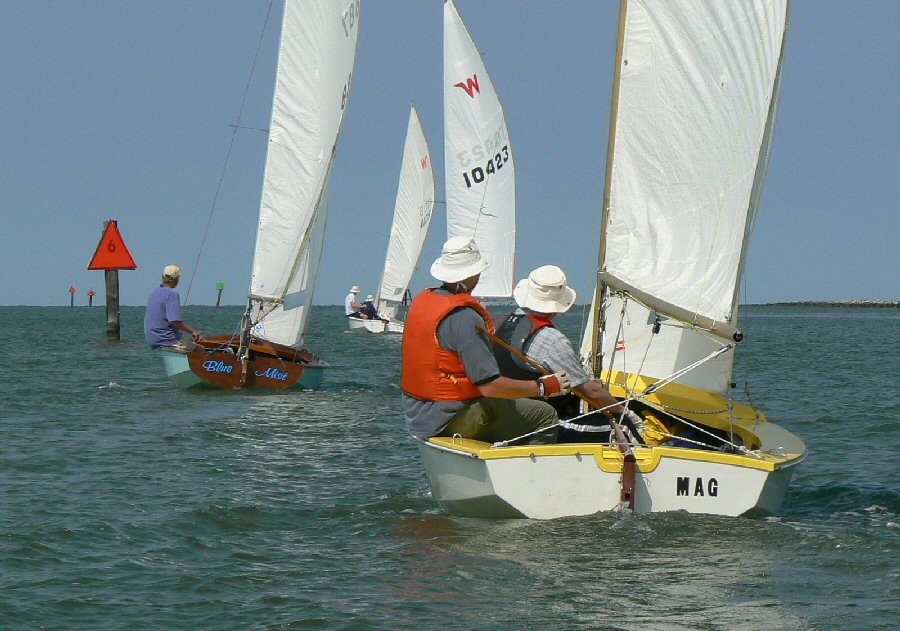 |
|
Another view of our
assorted
mainsail shapes. Hans and I, meanwhile, were easily kept
in our
position astern of the others until
we passed the last of the channel markers and hardened
up to
close-hauled. At that point, we cranked on lots of vang,
usually eased
our main a few inches off the corner of the transom and
pinched up
enough to sail with a partial luff of both main and jib
in order to
keep The Nutshell
from
heeling so much that we would begin to feel excessive
weather helm. The
other adjustment we made was to add some main
cunningham tension which brought the position of
maximum mainsail
draft back forward to mid-mainsail after the added vang
tension had
bent the mast and flattened the forward half of the
mainsail. In these
conditions, the friction of the wind blowing aft across
the main at a
good clip will further push the cloth and thus the
position of max.
draft well aft even in a brand new mainsail, let alone
in a worn-out
old mainsail like ours that has softened after 13 years
of hard use.
Since having the max. draft aft near the leech does
nothing but
increase your tendency to heel, it is well worth making
the effort to
add some main cunningham when beating in any kind of a
breeze. With the
above sail settings, Hans and I made significantly
better progress to
windward than the other four boats, even though we never
once hiked
out, remaining instead, comfortably perched on the high
side while
enjoying our Beck's beer. We even had a port beer and a
starboard beer,
living in the bailer cut-outs of the floorboards when
not being pressed
into service.
... |
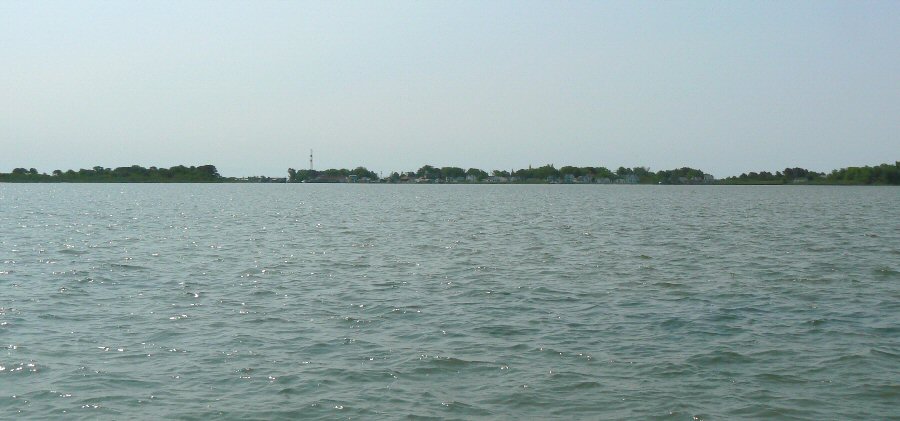 |
| A look astern at ... - click here
to see full-size pic ... |
 |
| ... the town of Ewell on
Smith
Island where we had again enjoyed our stay. - click here
to see full-size pic ... |
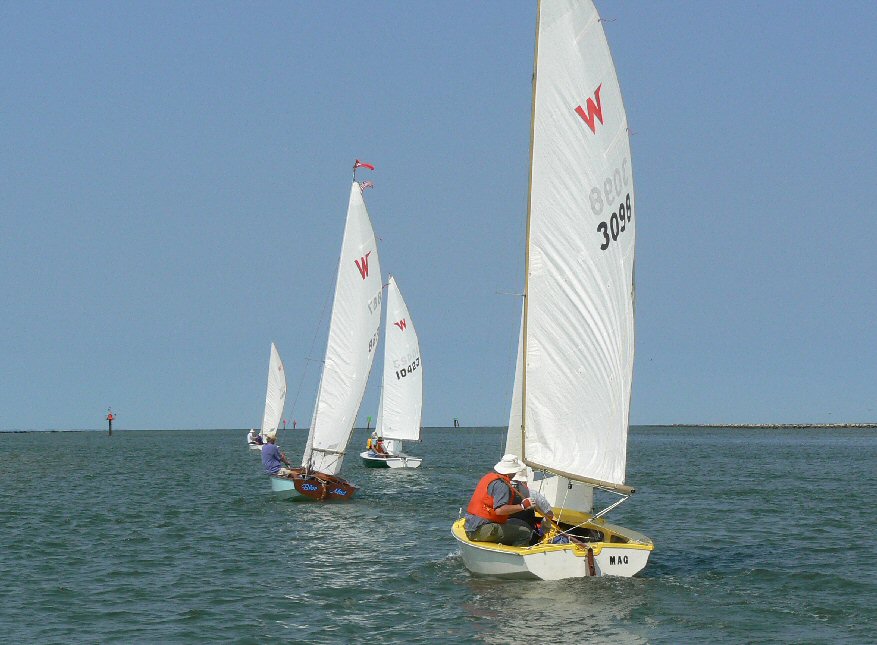 |
| Here we are a couple of
more
times "in ... ... |
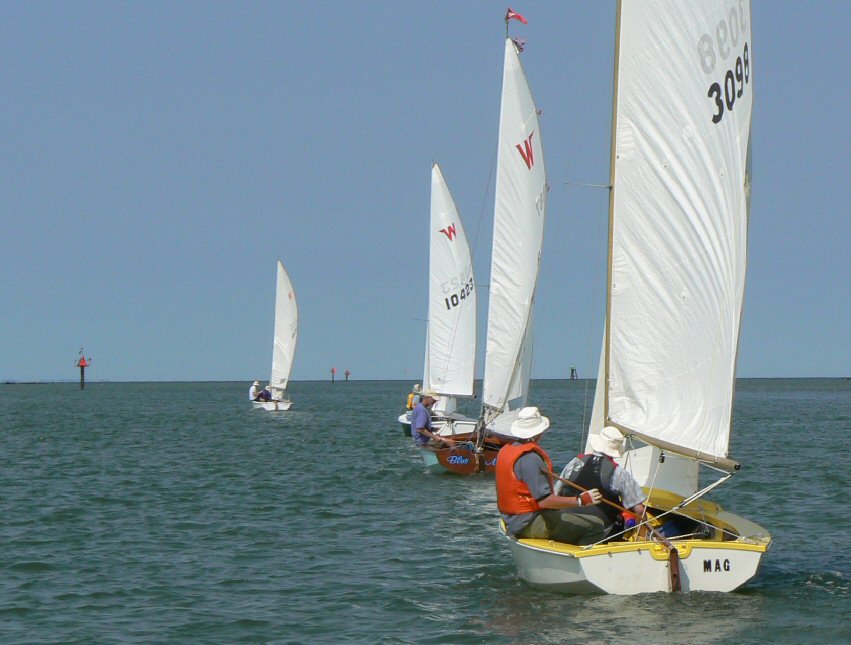 |
| ... line astern" as they
say in
my favourite historical novels (especially the unique Alan Lewrie series by Dewey Lambdin) about naval warfare 200 years ago. ... |
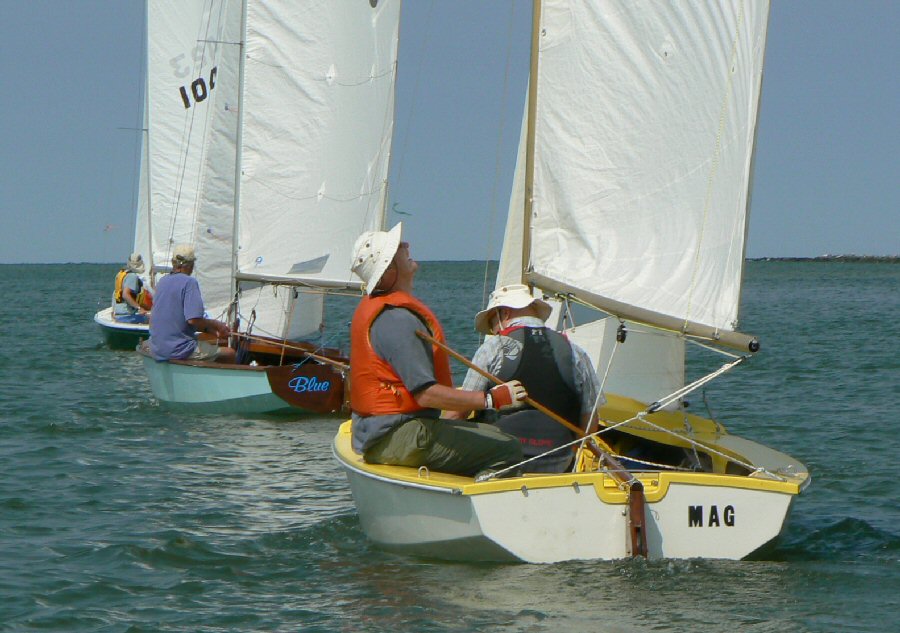 |
| André checks his mainsail
trim. ... |
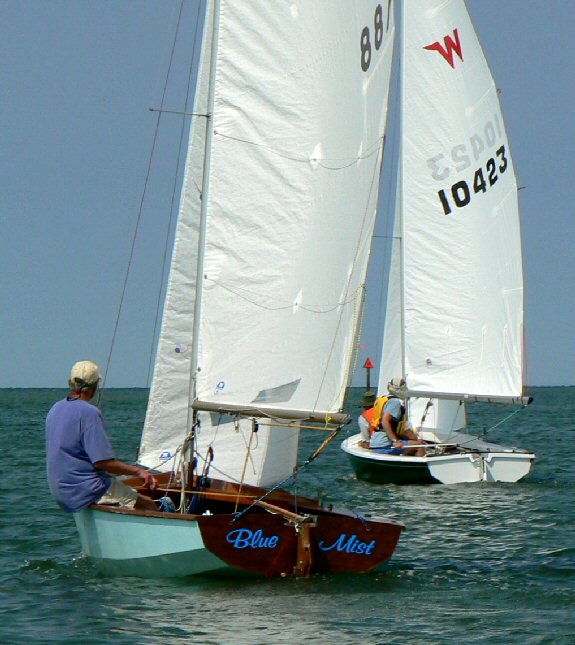 |
| Dick sails his Blue Mist on the edge
of a luff to
keep her from heeling too much. ... |
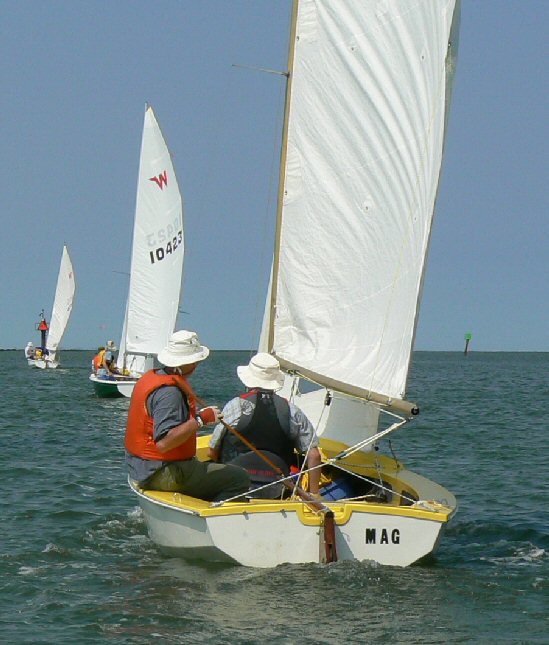 |
| The flotilla continues to
leave
the channel markers to port. ... |
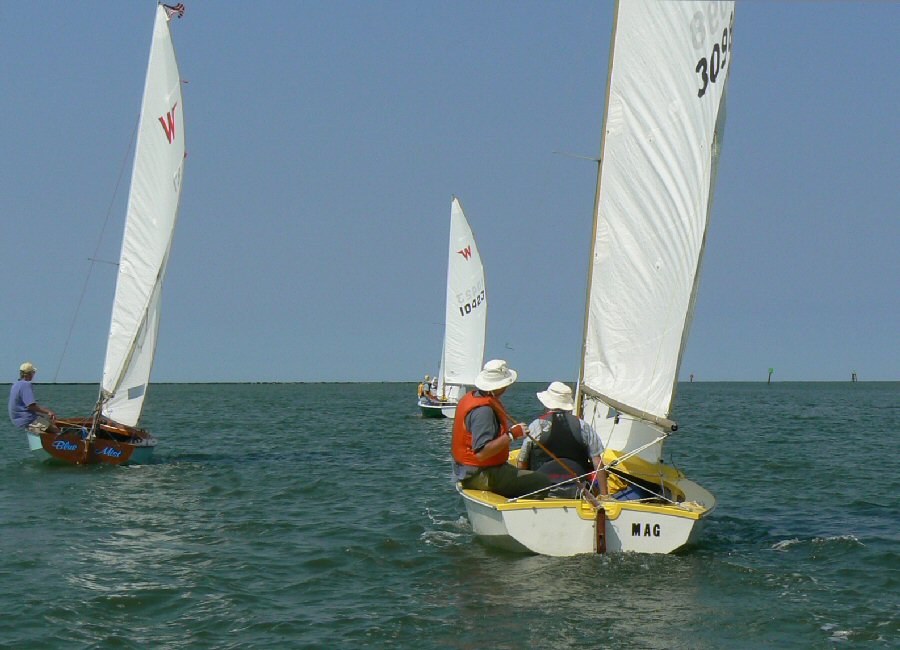 |
| You couldn't ask for a
better
day for our 12-mile beat to Tangier: sunshine, a lovely
breeze and
temperatures in the low 80's F. ... |
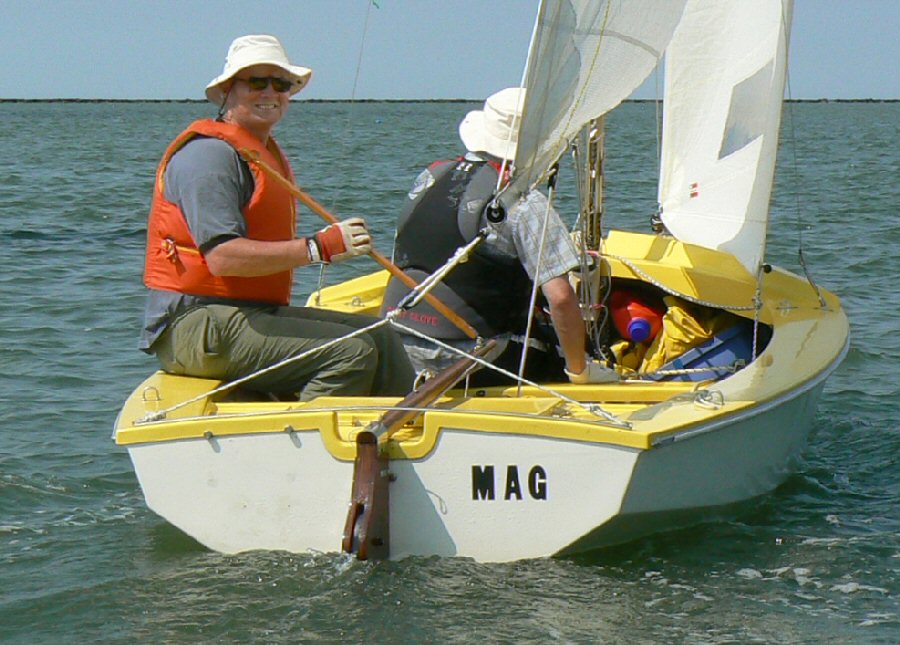 |
| André (l) and Roger are
ready to rock
and roll, as are ... ... |
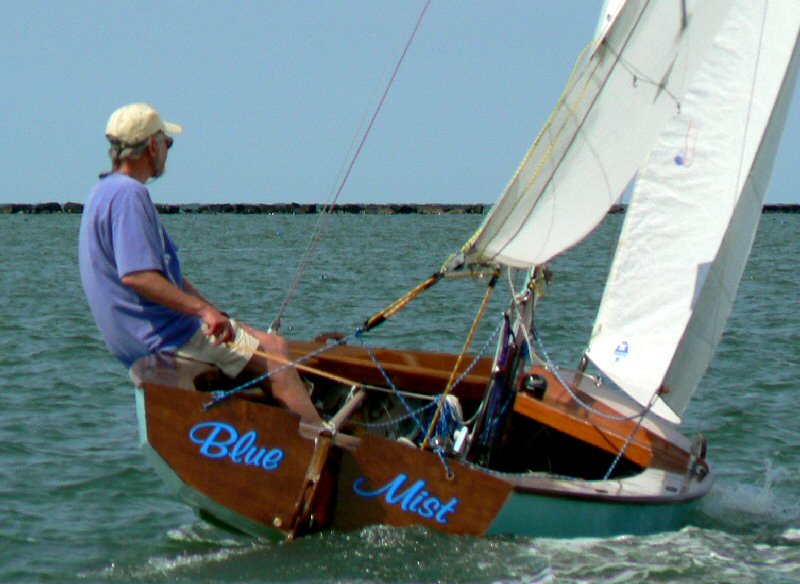 |
| ... Dick Harrington and ... ... |
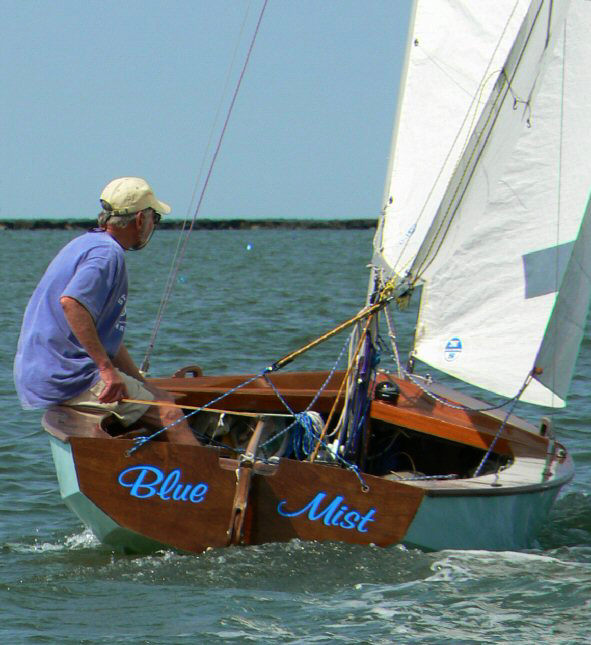 |
| ... Blue Mist. ... |
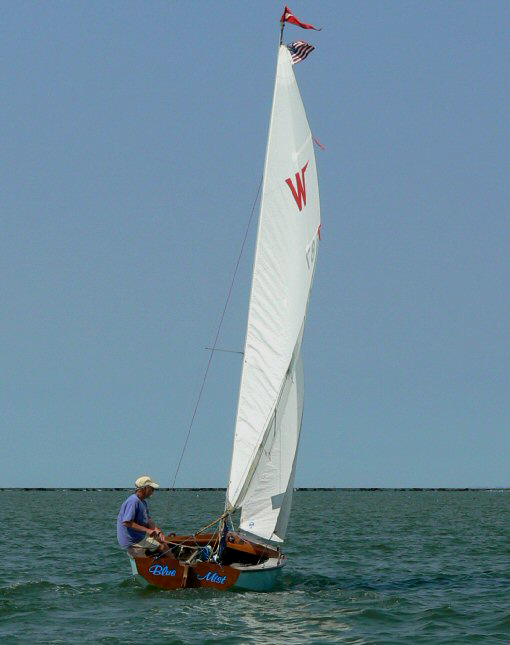 |
| Nothing but glorious ... ... |
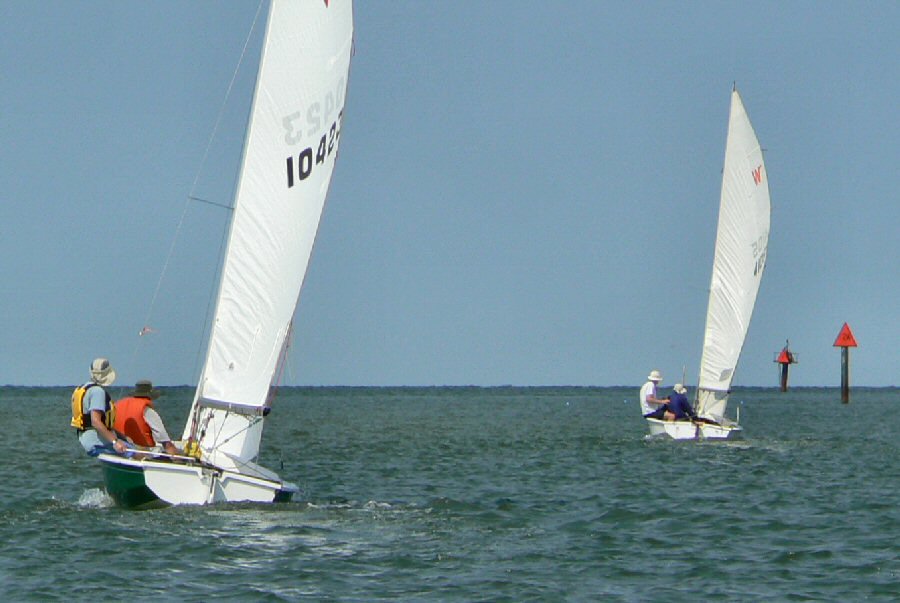 |
| ... Chesapeake Bay waters
ahead
of us for the next four to five hours. ... |
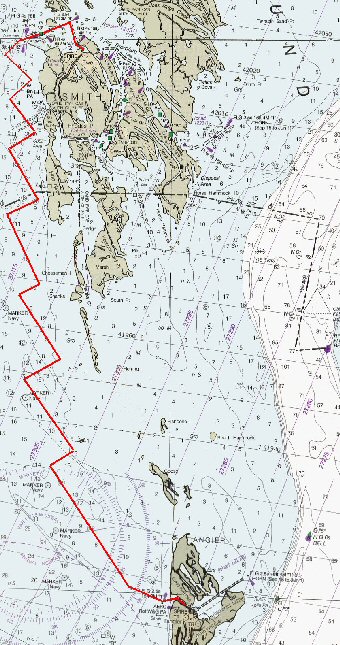 |
| This year, we did not tack nearly as often as this chart image (re-used from the 2006 cruise report) would suggest. Having a GPS aboard most boats, we could hold a long port tack out into the Bay and easily check with the GPS to make sure we were not overstanding Tangier. This in turn reduced the amount of incidental contact between our centreboards and the rather shallow sandy bottom anywhere near the islands. - click here to see full-size image |